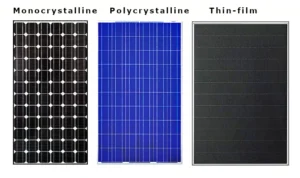A closer look at how agrivoltaics modify the microclimate.
Agrivoltaics, the combination of agriculture and solar power generation, brings forth a crucial consideration. The availability of light for both energy production and crop growth.
Light
In dual land-use systems like agrivoltaics, the density and design of solar panels directly influence the reduction in available light, ranging from 13% to 30%. This reduction prompts plants to allocate carbon resources towards increasing aboveground growth in response to the shade caused by solar panels.

Different crops, including lettuce, pepper, celeriac, winter wheat, and grass-clover mixtures, have exhibited increased plant height and aboveground biomass under shade in agrivoltaic systems. While this compensatory response benefits crops with economic interest in aboveground leaf material, it can lead to changes in leaf characteristics, such as increased specific leaf area (SLA) and reduced leaf thickness. These changes may impact crop quality and pose new challenges in harvesting, packaging, and marketing.
Shading in agrivoltaic systems also alters the light spectrum, resulting in different amounts of direct, diffuse, and reflected photosynthetically active radiation (PAR) available to plants. While direct light enhances photosynthesis in sun leaves, diffuse light can increase photosynthesis in shaded leaves within the canopy. The morphological responses of plants to shading, such as elongation of stems and petioles, leaf reorientation, and reduced branching, can enhance light interception within the canopy and favor whole-plant productivity.
Temporal light availability also fluctuates significantly in agrivoltaic systems, with higher variability compared to open field conditions. These fluctuations can impact crop productivity, but the net effects depend on the crop’s canopy architecture, light use efficiency, and adaptability to changing light conditions.
Future research in plant ecology and crop sciences should focus on understanding crop-specific responses to shading and developing strategies to optimize light availability in agrivoltaic systems. By addressing these pressing research questions, we can unlock the full potential of agrivoltaics as a sustainable and efficient approach that harmonizes solar energy generation and agricultural production.
Air Temperature
The influence on air temperature has yielded mixed findings. While some studies have reported a significant decrease in air temperature, others have found no significant difference. Lower air temperature in agrivoltaic systems can benefit crops, particularly during hot and dry periods, by enhancing leaf photosynthesis and reducing leaf senescence. Additionally, reduced canopy surface temperature can result in lower evaporative demands, positively impacting crop growth and yield.
Diurnal temperature variations in both soil and air are typically increased in agrivoltaic systems. However, the implications for crop yield and quality remain uncertain. While the reduction of day-night temperature amplitude under PV panels has been observed, higher night-time temperatures can influence respiration and potentially reduce crop yield. On the other hand, increased night-time temperatures may mitigate frost damage in temperate climates, improving crop productivity.
Altered air temperature
The effects of altered air temperature on crop nutritional quality are crop-specific, potentially altering carbohydrate composition, oil content, and oil composition. Limited research exists on the influence of agrivoltaics specifically on crop quality, with most studies not primarily focused on temperature effects. For example, mineral and protein content in celeriac showed no treatment effect in an agrivoltaic system, whereas artificial shading in a field trial increased protein content in durum wheat.
Further investigations are needed to comprehensively understand the impact of agrivoltaics on air temperature and its subsequent effects on crop responses. Evaluating canopy temperature can be a valuable approach for assessing temperature effects in agrivoltaic systems. By gaining deeper insights into these factors, we can optimize agrivoltaic practices to maximize crop productivity and quality in various climatic conditions.
Soil water availability and evaporative demand
Water availability is crucial for plant growth, and plants regulate water loss through stomatal closure in response to decreasing soil water availability and increasing evaporative water demand. However, stomatal closure directly affects photosynthetic carbon acquisition, potentially reducing productivity. The trade-off between water loss and productivity varies among crops and is linked to the stomatal behavior of different species, which remains insufficiently investigated in agrivoltaic systems.
Drought stress in plants arises from low soil water supply, high atmospheric water demand, or a combination of both. Agrivoltaic systems alter both soil water availability, through rain shading or reduced evapotranspiration, and atmospheric evaporative water demand. Reductions in evapotranspiration are commonly observed in agrivoltaic systems, resulting in decreased atmospheric water demand, often quantified as vapor pressure deficit (VPD). Ultimately, this can increase water use efficiency in crops growing beneath solar panels, as demonstrated in agave plants and pasture grass species.
The modification of soil-plant-atmosphere water relations by agrivoltaics, along with the trade-off between transpirational water loss and photosynthetic carbon gain, can lead to different net effects on crop growth depending on environmental conditions. Shading by agrivoltaic systems may reduce growth in years with sufficient precipitation but low atmospheric water demand. Conversely, shading can have positive effects in years with low precipitation due to reduced evaporation and plant water loss. These contrasting effects have been observed in crops such as winter wheat and potatoes.
To conclude
The extent of the drought attenuation effect and the variations within the agrivoltaic system (e.g., fully shaded vs. partly shaded areas) are still not well understood for most crops. This knowledge is essential for adapting crop models to agrivoltaic settings and implementing crop-specific water management strategies, including automated irrigation systems using water collected on the panels during precipitation events (water harvesting) and stored for periods of drought stress.
Further research is necessary to quantify the magnitude of the drought attenuation effect in agrivoltaic systems and understand small-scale differences within the system. This information is crucial for developing tailored water management approaches and optimizing crop productivity in agrivoltaic settings.
Read another article about Agrivoltaics.
Or have a look on Amazon, you will find my book!


2 thoughts on “A closer look at how agrivoltaics modify the microclimate.”
Comments are closed.